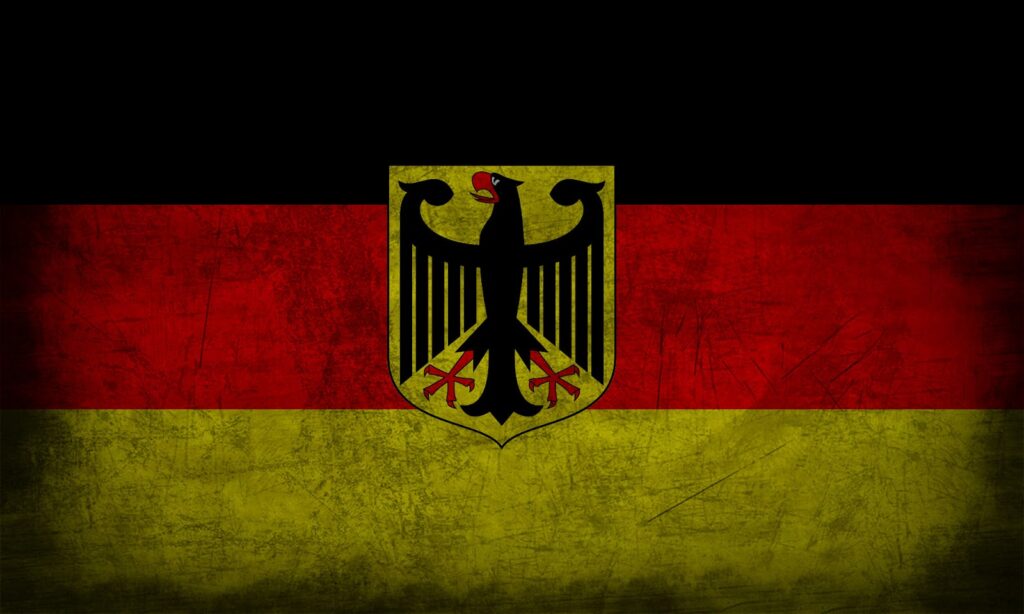In the fall of 1941, William McCready, an Irishman from East Orange, New Jersey, wed a young German girl named Marian Heidrich at a small church in Montclair. This couple went on to produce three children: Ellen Elizabeth, John Harold, and Karen Diana, my mother.
I have always been fascinated by my family’s history. In the small sleepy cemetery up the lane from my farmhouse in Bretzville, Indiana lays a good portion of that young German girl’s family, and I can remember as a child my mom taking me from headstone to headstone, explaining the links I had with these ancient people who were at eternal rest under those graves, sharing stories which have been passed down for generations about each of them. Marian’s Aunt Meta Partenhemer, the beautiful daughter of Philip and Wilhelmina, who died tragically young from tuberculosis in an upstairs bedroom of the old family farmhouse just down the lane. Or her great grandpa, Jacob Bretz, son of Phillip and Annie, the pioneering German farmer who put down roots in a small Indiana town which now bears his name. These stories always made an impression on me. The fact that these men and women who existed to me only as eerie black and white photographs on our farmhouse wall were real people that led their own lives was a truth that for some reason set in for me only after seeing their names on that stone, walking around the places where they walked, hearing their stories from those that were a few generations less removed from them than I.
In the early 1800’s my German ancestors, like thousands of others like them, began sailing to America on ships from Europe to make new lives for themselves. They embarked from ports like Rotterdam, Le Havre and Antwerp, likely the most giant cities they’d ever laid eyes on until their few weeks long journey across the ocean brought them into the harbor of New York City (this one being the ship manifest of the steamer which the Bretzes rode across the Atlantic in 1840… go ahead, try to find them in there). I’d like to picture my ancestors on the deck of that steamship being greeted by the Statue of Liberty, but they arrived 40 years before it was complete and were met instead by smog and long queues at the Port of New York’s immigration office (Ellis Island had not yet opened its gates). The land they left behind them was a disjointed one: a lose confederation of sovereign states making up the German confederation (my family being from the Dukedom of Hesse), but revolution was afoot in Europe after the American and French ones inspired the peasant classes of Europe that they need not be forever tied to their land and ruled over by Lords, Dukes and Kings. Their own plot of land in the young state of Indiana on the American frontier was enough to entice them to pack their bags and leave. To finally return to the land that these brave men and women up and left so many years ago was something that I’d imagined for years. I have often pictured what the fields of Indiana may have looked like during their time; what those now overgrown ruts in our forest looked like when they served as roads for their horse drawn buggies. But what I never was able to picture was the country they decided to leave. And why.
Having roots in western and central Germany, my family of several generations back likely never made it to the Bavarian towns which were on our itinerary. But with each small town we passed in the southern German countryside, its buildings all like the gingerbread houses I’d developed in my mind from German fairy tales, I couldn’t help but imagine it one the ones that the German Partenheimers, Bretzes and Heidrichs knew centuries ago. For me, the attraction of Germany was not what makes it a major player in the world today: its powerful economic centers, its modern and culturally avant garde cities, its strong and dominant place in the European system. It was the countryside of Bavaria. The hard work ethic evident by the farmers in the fields we passed which has no doubt contributed to its success to this day. I got to soak this in as we drove from town to town north into Germany from Innsbruck. As we neared Munich, this slow cruise through the countryside came to an end. Believe it or not, although our VW Polo topped out at 110 MPH, flying down the Autobahn did not afford one much opportunity to slowly take in the sights; most of my time now was spent with my eyes fixed on the rear view mirror, making sure a BMW was not approaching at my 6 and colliding with me like I was stopped even though I was cruising along above 100.
But the beauty of Germany. Its mountains. The farms. The green everywhere (which is quite the sight when coming from Denver or Vegas) – it all made me feel proud that I knew this is where my family once called home. It made me marvel at what a dreamland America must have seemed for them to board ships and leave the place in search for a new life somewhere else. One thing that struck me though was that these rolling green hills were not altogether unlike those of southern Indiana. It comforted me to know that they must have in some small way felt at home in Indiana, just as the drive through Bavaria now felt a little like home to me.



Meta Partenheimer was my grandfather Elmer William Moenkhaus’ first cousin. Thank you